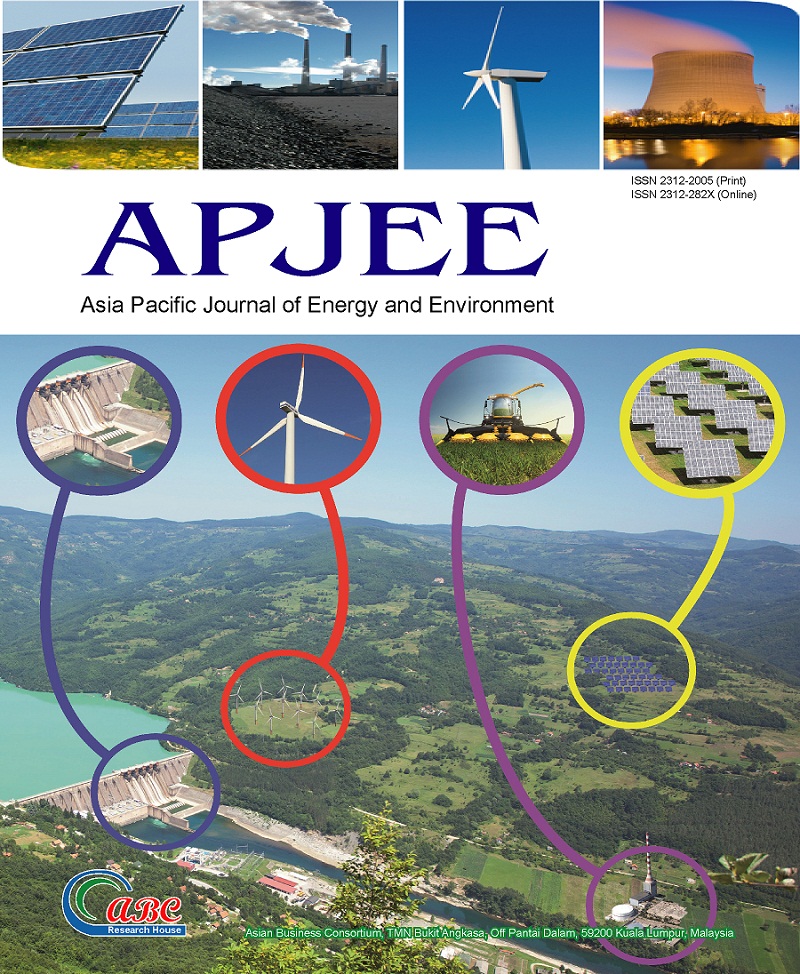Effects of Quantum Confinements in Tin Sulphide Nanocrystals Produced by Wet-Solution Technique
DOI:
https://doi.org/10.18034/apjee.v6i1.261Keywords:
Potential Morphing Method, Quantum Confinement effect, Hartree Fock ApproximationAbstract
In thin film nano-crystals studies, electron energy levels are known not continuous in the bulk thin films but are rather discrete(finite density of states) because of confinement of their electron wave functions to the physically dimensions of the particles. This phenomenon is called Quantum confinement and therefore nano-crystals are also referred to Quantum dots. The quantum confinement effect is mainly observed when the size of the particle involved is too small to be comparable to the wavelength of the electron. To understand this effect, this study broke the words confinement to mean to confine the motion of randomly moving electron to restrict its motion in specific energy levels (discreteness) and the term quantum to reflect the atomic realm of particles involved in this study. So as the size of a particle decrease to a nano scale, then the decrease in confining dimension causes the particle energy levels to be too discrete and at the same time widens up the band gap. As a result the ultimately effect is that the band gap energy increases. In this study, nanocrystalline tin sulphide (SnS) powder was prepared using tin chloride (SnCl2) as a tin ion (Sn+2) source and sodium sulfide (Na2S) as a sulfur (S-2) ion source using solution magneto DC sputtering technique. The as-synthesized thin film in form of nanoparticles were then qualitatively and quantitatively analyzed and characterized in terms of their morphological, structural and optical properties and found to have an orthorhombic structure whose direct band gap had blue shifted (1.74 eV) and was confirmed using theoretical calculations of exciton energy based on the potential morphing method (PMM) in the Hartree Fock approximation.
Downloads
References
Azizian-Kalandaragh Y. & Khodayari A., 2010. Aqueous synthesis and characterization of nearly monodispersed ZnS nanocrystals, Physica Status Solidi a, 207, 9, 2144-2148. DOI: https://doi.org/10.1002/pssa.200925484
Azizian-Kalandaragh Y. & Khodayari A., 2010. Ultrasound-assisted preparation of CdSe nanocrystals in the presence of Polyvinyl alcohol as a capping agent. Mater. Sci. Semicond. Process. 13, 225–230. DOI: https://doi.org/10.1016/j.mssp.2010.10.018
Azizian-Kalandaragh Y., Khodayari A., & Behboudnia M., 2009. Ultrasound-assisted synthesis of ZnO semiconductor nanostructures. Mater. Sci. Semicond. Process. 12, 142-145. DOI: https://doi.org/10.1016/j.mssp.2009.09.006
Bashkirov S.A., Gremenok V.F., & Ivanov V.A., 2011. Physical properties of SnS thin films fabricated by hot wall deposition. Fizika i Tekhnika Poluprovodnikov 45, 765-769. DOI: https://doi.org/10.1134/S1063782611060030
Goharshadi E.K., Ding Y., Jorabchi M.N. & Nancarrow P., 2009. Ultrasound-assisted green synthesis of nanocrystalline ZnO in the ionic liquid [hmim][NTf2]. Ultraso. Sonochem. 16, 120-123. DOI: https://doi.org/10.1016/j.ultsonch.2008.05.017
Gontard L.C., Ozkaya D. & Dunin-Borkowski R., 2011. A simple algorithm for measuring particle size distributions on an uneven background from TEM images. Ultramicroscopy 111, 101–106. DOI: https://doi.org/10.1016/j.ultramic.2010.10.011
Liu H., Liu Y., Wang Z., & He P., 2010. Facile synthesis of monodisperse, size-tunable SnS nanoparticles potentially for solar cell energy conversion. Nanotechnology 21, 105707. DOI: https://doi.org/10.1088/0957-4484/21/10/105707
Mahendia S., Tomar A.K., Chahal R.P., Goyal P. & Kumar S., 2011. Optical and structural properties of poly(vinyl alcohol) films embedded with citrate-stabilized gold nanoparticles. J. Phys. D 44, 205105. DOI: https://doi.org/10.1088/0022-3727/44/20/205105
Ning J., Men K., Xiao G., Wang L., Dai Q., Zou B., Liu B. & Zou G., 2010. Facile synthesis of IV–VI SnS nanocrystals with shape and size control: Nanoparticles, nanoflowers and amorphous nanosheets. Nanoscale 2, 1699-1703. DOI: https://doi.org/10.1039/c0nr00052c
Poulopoulos P., Baskoutas S., Pappas S.D., Garoufalis C.S., Droulias S.A., Zamani A. & V. Kapaklis, 2011. Intense Quantum Confinement Effects in Cu2O Thin Films. J. Phys. Chem. C 115, 14839-14843. DOI: https://doi.org/10.1021/jp203145n
Vidal J., Lany S., d’Avezac M., Zunger A., Zakutayev A., Francis J. & Tate J., 2012. Band-structure, optical properties, and defect physics of the photovoltaic semiconductor SnS. Appl. Phys. Lett. 100, 032104-032107. DOI: https://doi.org/10.1063/1.3675880
Yue G.H., Peng D.L., Yan P.X., Wang L.S., Wang W. & Luo X.H., 2009. Structure and optical properties of SnS thin film prepared by pulse electrodeposition. J. Alloy & Compounds 468, 254-257. DOI: https://doi.org/10.1016/j.jallcom.2008.01.047
-- 0 --
Downloads
Published
Issue
Section
License









